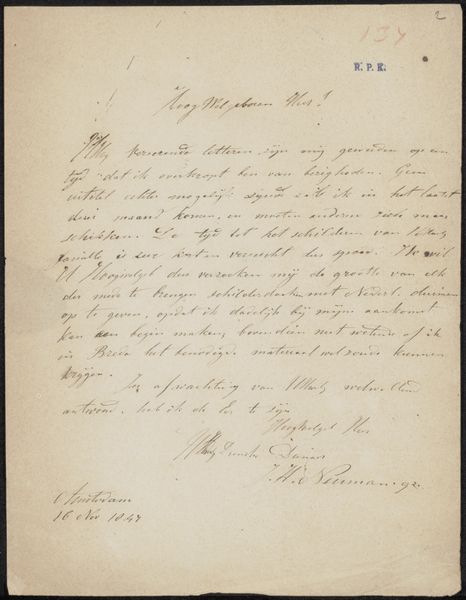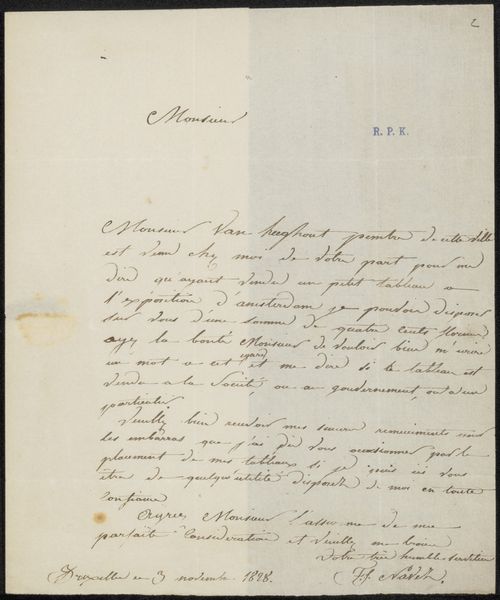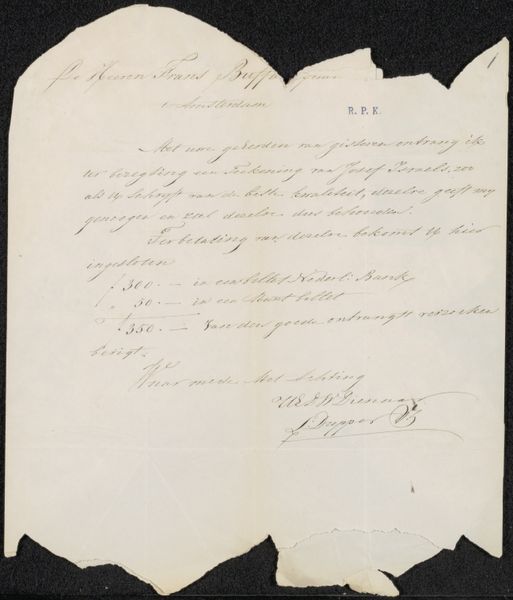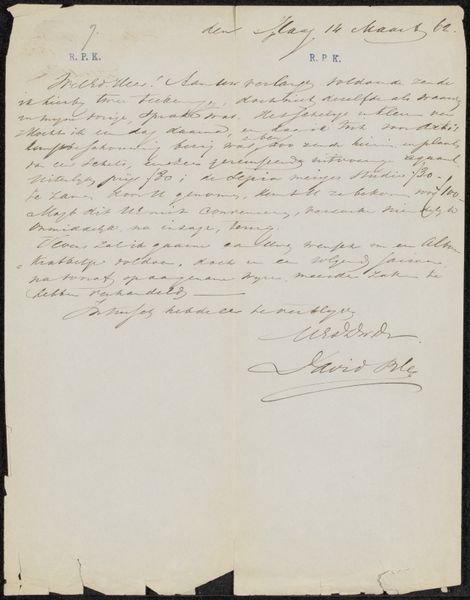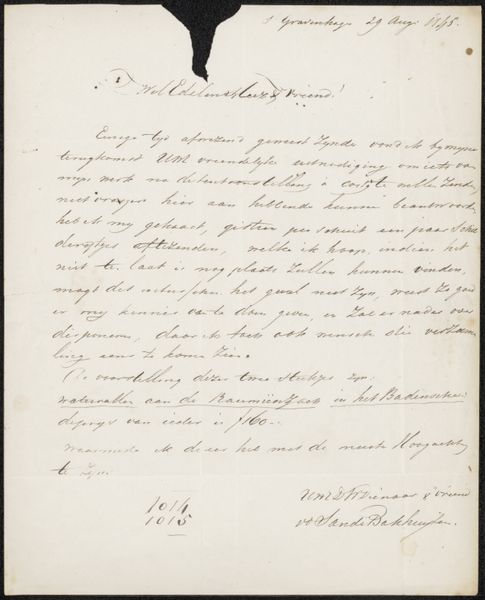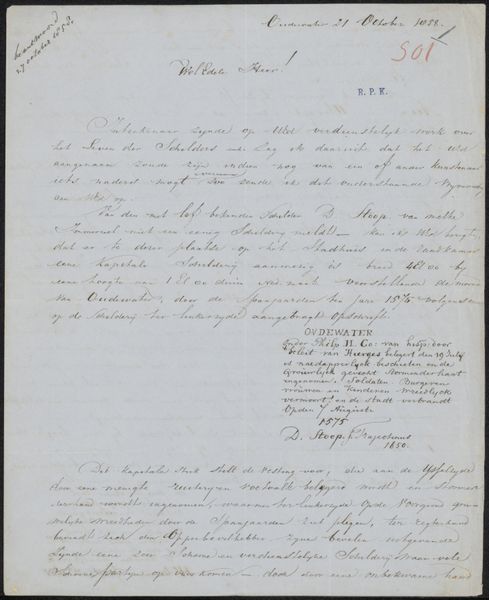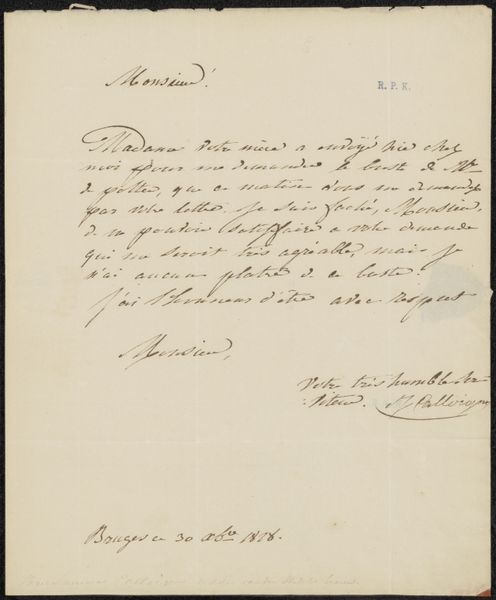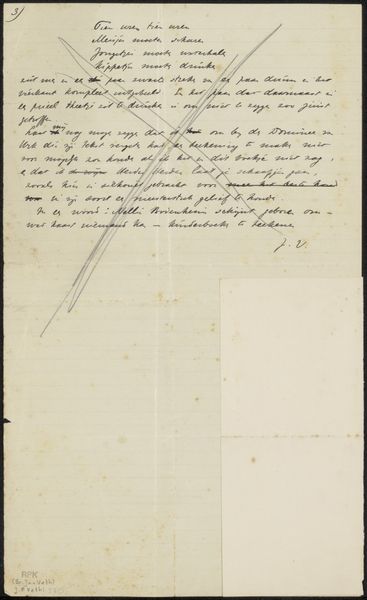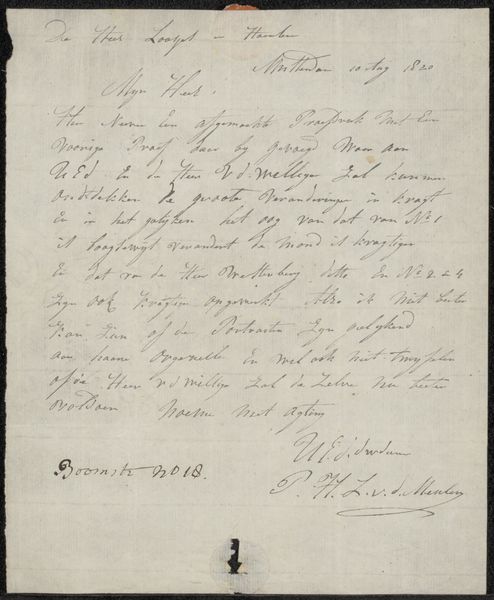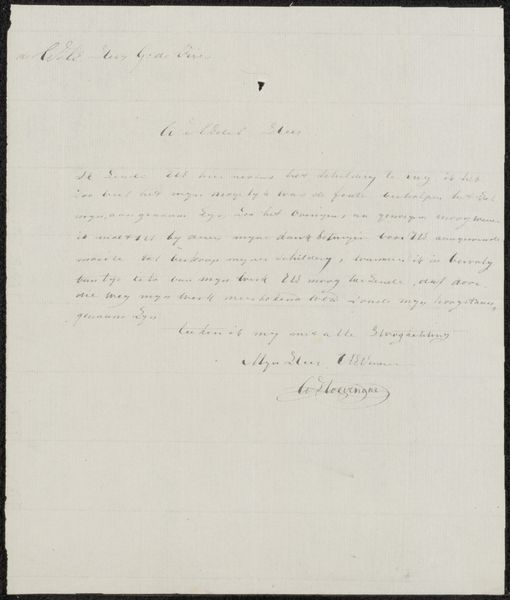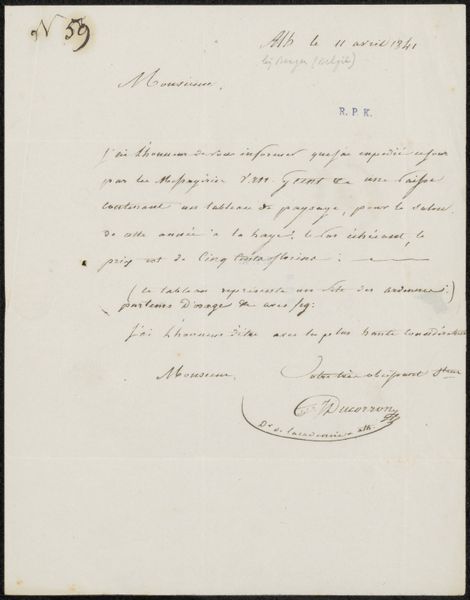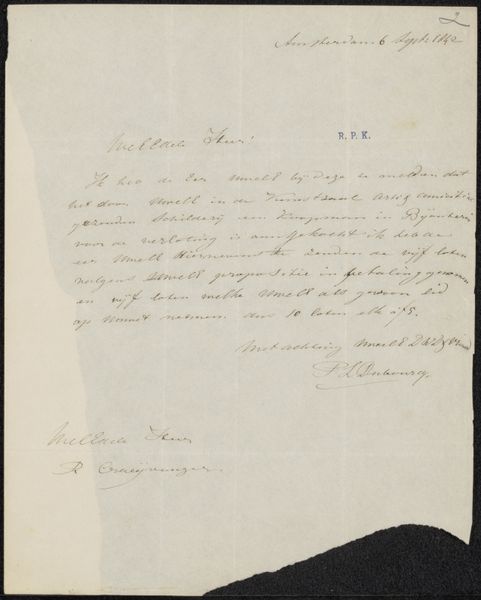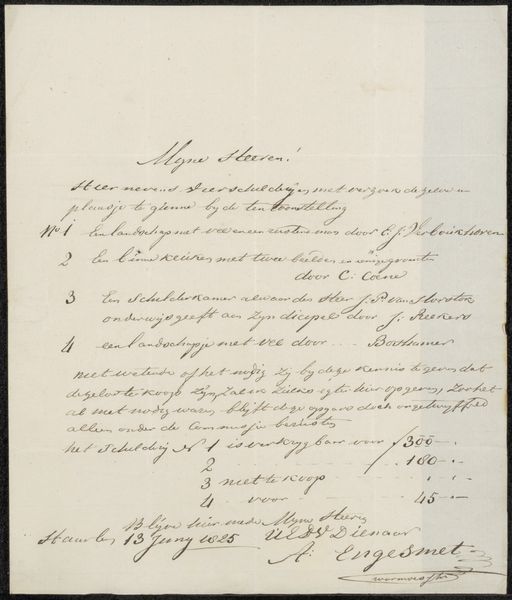
drawing, paper, ink
#
portrait
#
drawing
#
paper
#
ink
#
romanticism
Copyright: Rijks Museum: Open Domain
Curator: This is a letter penned by Cornelis Gerrit Verburgh, probably around 1833, entitled "Brief aan Christiaan Kramm." It’s currently held at the Rijksmuseum. We can see it was created with ink on paper. Editor: Immediately, the letter evokes a sense of intimacy and delicate communication. The faded ink and aged paper carry a weight of personal history. I imagine holding a conversation right now where things unsaid are as weighty as things said. Curator: Absolutely. The use of handwritten script during this period also conveys a great deal about the author’s social standing. Handwriting was carefully taught to young children during the eighteenth century. If done beautifully and meticulously, you’d be trained in specific penmanship. Editor: Looking at the loops and flourishes in Verburgh's script, I detect a certain flourish typical of the Romantic era, an attention to graceful expression but within quite rigorous rules, suggesting both control and passion operating together. What specific details signal it as Romantic? Curator: Well, consider that romanticism as a movement pushed back on institutional structure and thought during the 18th century and started to privilege expression of feeling. While this letter does concern mundane practicalities, Verburgh expresses his concern for Christian Kramm. You might wonder what these references or gestures signify socially or professionally? Is Verburgh trying to appear sensitive? Or, is the reference genuinely intimate? It's these questions about identity and purpose that interest me. Editor: I am quite drawn to Verburgh's stylized signature, the flourish underneath it reminds me of the natural world. A vine growing organically, it speaks to natural human expression while also rooted within cultural values of politeness. Curator: The history embedded within such a personal artifact really brings the era alive, doesn't it? The very act of communication has this direct and quite lovely connection through time, right to this instant! Editor: I agree. It's fascinating how a seemingly simple document like this, through careful attention, reveals such layers of history, and psychology, as we see the hand of a specific individual working through the social and cultural expectations of his time.
Comments
No comments
Be the first to comment and join the conversation on the ultimate creative platform.
